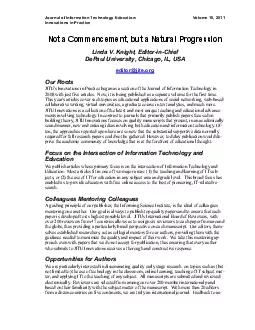PPT- What are the three most important innovations, or inventions, of your lifetime?
Author : basidell | Published Date : 2020-06-19
Turn amp Talk In this lesson you will be introduced to some of the innovations of the late 1800s and early 1900s You will learn about the rise of industrialism in
Presentation Embed Code
Download Presentation
Download Presentation The PPT/PDF document " What are the three most important inn..." is the property of its rightful owner. Permission is granted to download and print the materials on this website for personal, non-commercial use only, and to display it on your personal computer provided you do not modify the materials and that you retain all copyright notices contained in the materials. By downloading content from our website, you accept the terms of this agreement.
What are the three most important innovations, or inventions, of your lifetime?: Transcript
Download Rules Of Document
" What are the three most important innovations, or inventions, of your lifetime?"The content belongs to its owner. You may download and print it for personal use, without modification, and keep all copyright notices. By downloading, you agree to these terms.
Related Documents














